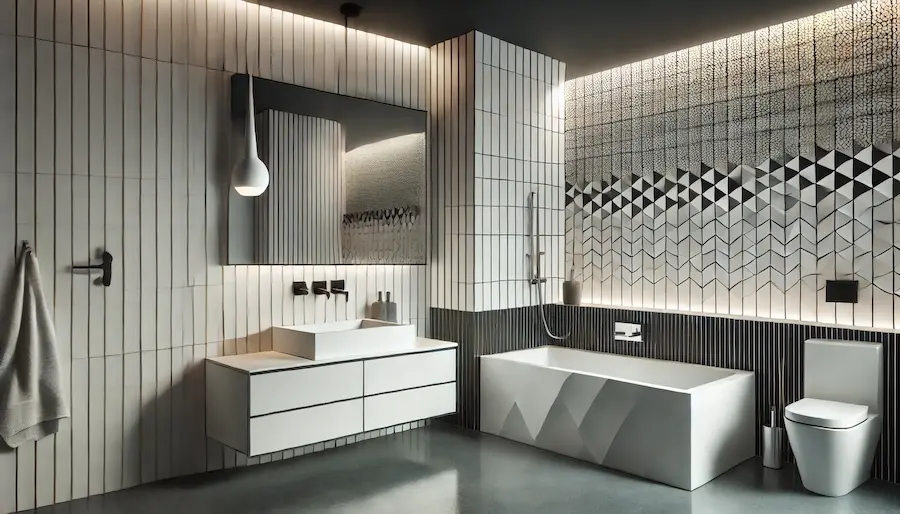Bauhaus design, originating from the early 20th-century German art school, emphasizes functionality, simplicity, and the harmonious integration of art, craft, and technology. Incorporating Bauhaus principles into bathroom design results in spaces that are both practical and aesthetically pleasing.
History and Origins of Bauhaus Design
Founded in 1919 by architect Walter Gropius, the Bauhaus school sought to unify art, craft, and technology, promoting designs that were both functional and beautiful. This movement significantly influenced modern architecture and design, advocating for minimalism and the use of industrial materials.
Key Features of a Bauhaus Bathroom
- Functionality Over Ornamentation: Every element serves a purpose, eliminating unnecessary decoration. This approach ensures a clutter-free and efficient space.
- Clean Lines and Geometric Shapes: Incorporate straight lines and simple geometric forms to achieve a minimalist aesthetic. This design choice contributes to a sense of order and clarity.
- Industrial Materials: Utilize materials such as steel, glass, and concrete to reflect the industrial influence of Bauhaus design. These materials offer durability and a modern look.
- Neutral Color Palette with Bold Accents: Employ a base of neutral tones, complemented by strategic pops of primary colors like red, blue, or yellow to add visual interest. This color scheme maintains a balance between subtlety and vibrancy.
Applications of Bauhaus Principles in Bathroom Design
- Floating Vanities and Modular Furniture: Install wall-mounted vanities and modular storage units to enhance functionality and maintain clean lines. These features also contribute to an open and airy feel.
- Geometric Fixtures: Select sinks, bathtubs, and toilets with geometric shapes to reinforce the Bauhaus aesthetic. These fixtures serve as focal points while adhering to the design principles.
- Minimalist Accessories: Opt for simple, functional accessories such as frameless mirrors and unadorned towel racks to maintain the minimalist approach. This choice ensures that every item has a purpose and contributes to the overall design.
Considerations When Designing a Bauhaus Bathroom
- Space Optimization: Ensure that the layout maximizes space and promotes ease of movement, reflecting the Bauhaus emphasis on practicality. Thoughtful placement of fixtures and storage solutions can enhance functionality.
- Material Selection: Choose high-quality, durable materials that align with the industrial aesthetic, ensuring longevity and coherence in design. Materials like stainless steel and tempered glass are both practical and visually appealing.
- Lighting: Incorporate ample natural light and consider minimalist light fixtures to enhance the space’s functionality and ambiance. Proper lighting can highlight the design elements and create a welcoming atmosphere.
Conclusion
A Bauhaus-inspired bathroom embodies the principles of functionality and simplicity, resulting in a space that is both efficient and elegant. By focusing on clean lines, geometric shapes, and the thoughtful use of materials, you can create a bathroom that reflects the timeless appeal of Bauhaus design.
